
I find it very flattering to be the first one to make a review for Richtersveld. I still wonder why it was not listed as a mixed site (cultural and natural) considering the unique biodiversity and way of floral survival that exist in that region. My friend and I went through Vioolsdrif, near the border to Namibia, where we spent two nights to tick this site off, to get to the core zone. After going through the mountains,and passing through numerous massive rocks with 4,000 yo ancient Nama carvings (as shown in the page's photo above), the landscape dramatically changes to the world of the succulents - actually, upon entering Northern Cape region, the fynbos ecosystem loses presence. On the site, it constantly made me wonder how the plants there survive knowing how little rain the place gets, let alone how it can continually support pastoral activities for thousands of years already. We visited various quartz fields (see photo with this review) where the most bizzare plants grow (the halfmansboom being the most iconic), as well as a goat pen and a water well made by the locals. In our 7 hours stay in that part of Richtersveld, we never saw any other tourists around, making the experience truly memorable for us. I also felt I earned some bragging rights in going here when our guide explained to us that there are only around 400-600 tourists who visit the site every year, as most would rather go to the white …
Keep reading 0 comments
Without going into detail, we can confirm that arranging a reservation for a descent in the mine is a nice example of Belgian surrealism (cf. Solivagant's review). But after a few atempts we made it to Spiennes and we can also confirm that the local staff and guides are very helpful and knowledgeable.
It seems that the parking close to the site is meant for the elderly and/or disabled, but you can park at the Rue du Petit Spiennes - Rue de Nouvelles intersection which is only a 5 minute walk to the site.
The tour starts with an explanation above ground and ends with a descent in the mine. This last part takes some time since everyone has to get in/out of safety gear. In the mine, three layers of flint/silex are clearly visible.
In principle, taking pictures is not allowed but - as we have also experienced in a number of other Walloon WHS - the guides mentions that as far as they are concerned taking pictures is no problem (and that they only have to say it pro forma).
Ps: the first Sunday of the month, the entrance to the site is free of charge.
Keep reading 0 comments
A few hours on the ground is long enough to feel the energy of Uluru but not long enough to become absorbed by it. Many parts of the site – including the entire northeastern face – are designated as sacred areas because of their significance to the indigenous inhabitants. That means people aren’t allowed to take photos of these areas and so it’s likely you’ve never seen images of them before. These, in particular, are the places that I would like to have spent more time looking at, thinking about, being a part of.
Keep reading 0 comments
I visited this WHS in November 2016. After a long drive from Aurangabad we decided to stop at a convenient village on the way to Bhopal so as to visit the Rock Shelters first thing in the morning on our way to Bhopal (instead of going to and fro from Bhopal).
600 metres above sea level and 100 metres above the surrounding valley lie the craggy sandstone formations of Bhimbetka amidst the Ratapani Wildlife Sanctuary. There are over 700 rock shelters with more than 400 of them having paintings. This makes Bhimbetka the largest repository of prehistoric art in India if not the whole of Asia.
The most striking thing about the paintings here is their superimposition over time. The paintings are mainly in red and white but there is also the occasional use of green and yellow with themes taken from everyday events such as hunting.
Entrance to the shelters costs only 100 rupees per person for foreigners + 250 rupees per vehichle if you want to avoid the rather uphill and desolate 2km walk to the site proper. It is the only WH site in India which still does not provide visitors with a new ASI printed ticket with a QR code but still relies on a handwritten one with government carbon copy (hence the cheaper price perhaps) which is clearly an indication of the few foreign visitors to this site.
Although I have visited several rock art WHS worldwide, I really enjoyed Bhimbetka as I could (still) …
Keep reading 0 comments
Peninsula Valdes is a world heritage site primarily about the fauna you can find on the peninsula. You get to see whales, penguins and sea lions. With a little luck you may also stumble across an Orca swimming near the shore line. The landscape is very similar to Patagonia overall with the noted exception of the sand cliffs and beaches.
To explore the peninsula I booked a tour. The island is way too large to do any exploring by foot or by bike and the sites too far apart. You end up spending loads of time driving across the island to get to the different view points. Our guide estimated that a round trip from Puerto Madryn is about 450km, a good part of it on gravel roads.
To really get to see all the animals you will probably need multiple days and tries. On my day trip I saw penguins, sea lions and whales, but no Orcas. Also, the whales didn’t come that close to our boat. If you plan going, make sure to check the season and the presence of the animals.
Getting There
The hub for Peninsula Valdes is Puerto Madryn. There is a local airport, but most flights go via Trelew. There is a shuttle service from Puerto Madryn to Trelew (Transfer PMY) which you can preorder online or in your hotel and it provides a connection to all flights, even the early ones. However, they forgot my reservation and I only …
Keep reading 0 comments
Visited just recently (November 2016), no doubt - one of Korea wonders, folk village that is completely different from other Korean villages.
The best town to start a trip is located in Southern Korean province of Jeollanam-do, Suncheon. From there - bus stop near intercity bus terminal - there are 4 different buses (16, 61, 63, 68) daily to Naganeupseong Fortress Town. They are not very frequent but the first should be around 8.00 a.m. (next one should be around 10.00 a.m.) The whole trip from Suncheon downtown should not take more than 40-45 minutes.
Uniqueness of Nagan Fortress Town (as it is called for short) lies in its layout. The whole village is surrounded by completely preserved walls with gates, moats and watching towers. While walls are a little bit of Joseon style (similar to those in Namhansanseong or Hwaseong), the majority of village buildings is covered with straw (tchatched roofs). What's more it is a normal village with residents trying to live normally despite huge number of tourists.
It is easy to combine visit to Naganeupseong with Seonamsa Temple located 18 km away. In fact there is a direct bus (16) that goes from central Suncheon to Naganeupseong then to Seonamsa and returns to Suncheon.
Keep reading 0 comments
On our way to Kamchatka, we have made a detour through Yakutsk. It's a good way to get to Kamchatka, as direct flights from Moscow to Petropavlovsk Kamchatskiy are much more expensive. Yakutsk is a good base from which to see the stunning Lena Pillars and then either to move on to Kamchatka or ride the Road of Bones. There were three of us and we booked a tour with local tour operator named Bolot (from Visit Yakutia), who arranged a three-hour return car ride to the bank of Lena River and a boat ride from there.
Overall it takes four hours to reach the small stretch of the vast national park that is actually open to tourists. The first magnificent sights are available as you sail past the massive rock pillars and then you can reach a viewing platform on top of the range through a well-marked wooden hiking path. It's quite steep path in which you climb about 300 metres in two kilometres of hike. It is strenuous but fortunately very short, so definitely doable. From the viewing platform you can observe the pillars on either side of you, the river itself and surrounding landscape. It's beautiful.
Count one whole day for the trip if your starting point is Yakutsk - four hours there, another four hours to get back, three hours on the premises of the park. There isn't much of facilities, so bring your food for the whole day with you. Alternatively, there was a basic …
Keep reading 0 comments
I visited Syria largely by public transportation in May 2009. After taking a bus from Palmyra to Aleppo, with a stop in Homs, I checked into the Baron Hotel, the oldest hotel in Syria, where I stayed in room 203, the same room where Agatha Christie wrote the first part of "Murder on the Orient Express." Mr. Walid, the Baron's renowned manager, organized a car and driver for a day trip to several nearby sites, including Serjilla and al-Bara (and its Tombeaux pyramidaux), two of the Ancient Villages of Northern Syria. During that same day trip, I visited Apamea to see its Great Colonnade, the main colonnaded avenue which runs for more than a mile and is among the longest and best preserved ancient Roman streets, and Hama to see its Norias, enormous water power wheels. Apamée (Afamia) and the Noréas de Hama are on the tentative list of UNESCO World Heritage Sites. For anyone interested in World Heritage Sites, there are very few days that can rival this day trip from Aleppo (itself a World Heritage Site), but it may be a long time before it can be safely repeated.
Keep reading 0 comments
“No bus.” I stood there at a loss. I had made my way past four travel agencies in Esquel and now stood in the local tourist office. “Tomorrow, sorry, but no bus. Bus was today. Next bus is on Saturday.” Everyone had told me that, so it was of little surprise. Still, I wasn’t happy as this was my last chance.
It was Wednesday evening and my bus to Puerto Madryn and Peninsula Valdes was booked for the next night. I had only the following day to visit. And then the lady of the tourist office asked: “But why don’t you try to hitchhike?”
I let that one sink. The last time (and the first time for that matter) I hitchhiked was back in January. At the time I was in Donana National Park and the bus connection with Sevilla was rather awkward. To kill time I figured to walk to the coast and see the beach on a winter day (recommended) and check out if another park visitor center was opened.
Eventually, a car driven by an elderly Spanish couple stopped and asked if I needed a ride. They dropped me off at the visitor center. After I had completed my visit, I decided to go all in, put my thumb up and in 5min had hitched a ride to the beach. So, I thought ... Let’s try this in Argentina.
That night I slept very little, always worrying about not getting back in time …
Keep reading 0 comments
In August 2016, I flew from Zanzibar to Mombasa, where I stayed at the Castle Royal Hotel, which dates from 1909 and is centrally located between the Moi Avenue tusks and Mombasa Old Town. Along with a guide from Diani Tours (http://www.dianisafaris-kenya.com), I walked from my hotel to the historic spice market (one of the most photogenic in East Africa) and then through the Old Town, where I visited the White House (which served as the first U.S. consulate in Kenya from 1915 - 1918), to Fort Jesus, a Portuguese fort built between 1593 and 1596. Based on what I had read, I thought it was prudent to arrange for a local guide, although the area seemed safe, at least for a daylight meandering -- still, it was helpful to have a guide to navigate through the labyrinthine streets from the spice market to Fort Jesus.
Keep reading 0 comments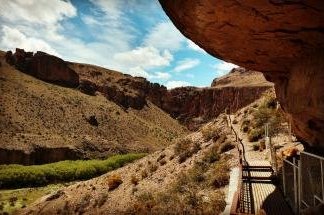
When you travel in Patagonia you will get to see endless plains, some hills, plenty of bushes and almost no trees. Over time the landscape feels quite monotonous, especially if you are spending days (and nights) on busses and cars traversing it.
As such, going to Cueva de los Manos was a great stop. At first it looks like all the surroundings. I even wondered why humans settled here in the first place. And then a lush, green canyon pops up, the canyon of Rio Pinturas. It’s an oasis and you understand why early humans came here. Their primary legacy are rock art paintings, specifically hands with the most famous one having six fingers.
Getting There
The site lies along Ruta 40. If you are travelling by car you can go simply turn off the highway. Note that it’s still quite a distance from the main road on a steep and pretty much terrible gravel road. This probably also stands in the way of hitchhiking here.
There are daily busses to Los Antiguos/Perito Moreno from Esquel (Los Alerces) and at least bidaily ones from El Calafate or El Chalten (Los Glaciares). Having made it to Perito Moreno, though, doesn’t really help as the actual site is still a 1,5h drive away.
Seeing I was short on time (I only wanted to stay one night in sleepy Perito Moreno), I arranged for a tour to pick me up at the bus stop. …
Keep reading 0 comments
As I approached the Tower of Belém, the skies opened up and the rain that had been threatening all morning finally started falling. Thankfully there was a lot to see inside both components of this World Heritage Site--the Tower of Belém and the Monastery of the Hieronymites--so I was able to stay dry while learning about Portugal's rich history of exploration. The tower was immediately recognizable to me, since I'd seen it previously on television. It was built as a defensive fortification and a show of power for Lisbon, and I enjoyed the (albeit rain-soaked) views from the roof of the tower. I was not as familiar with the monastery of the Order of Saint Jerome (aka Jerónimos Monastery or Hieronymites Monastery), and I was fascinated to learn that the monks were to pray for navigators and sailors who departed Portuguese shores on voyages of exploration. Within the monastery's church is the tomb of the renowned Portuguese explorer Vasco de Gama. More tributes to Portuguese exploration can also be seen in the buffer zone of the World Heritage Site, which includes the Monument to the Discoveries on the banks of the Tagus River. This monument includes carvings of famed Portuguese explorers, as well as a map commemorating their voyages.
Logistics: Belém can be reached by tram or private transportation from downtown Lisbon (an amazing city well worth a visit!).
Keep reading 0 comments
Los Glaciares is a national park in the southern Andes in Argentina. As the name suggests there are plenty of glaciers to see and explore, the most famous one being Perito Moreno.
The park is split into two parts: North and South. The UNESCO map doesn't quite convey this. The southern part is where you find the Perito Moreno glacier. It is serviced by the town of El Calafate that lies 1h drive outside of the park. The northern part holds the Fitz Roy Mountain range and spots several great hiking opportunities. This part is serviced by El Chalten and both parts are a 3h drive on a nowadays good paved road apart.
I agree with Solivigant that El Chalten and the northern part are more interesting. It’s not so much that the city is nicer per se; construction has picked up and I guess in a few years it will be equally touristy as El Calafate. But you are on the edge of the park and less dependent on a tour operator or bus. As such, I would do a one day visit from El Calafate to see Perito Moreno and then head to El Chalten the very evening or the next day.
To me the park is one of the great national parks of the world, truly deserving of its inscription and worth travelling this far.
Getting There
El Calafate has an airport with connections to Buenos Aires, Bariloche and Ushuaia. Busses from both El Calafate and El …
Keep reading 0 comments
Plitvice Lakes National Park already became a World Heritage Site in 1979. It was among 6 sites from Yugoslavia that were inscribed that year, sites which now lie in 4 different countries (the others were Ohrid, Kotor, Split, Stari Ras and Dubrovnik). Plitvice is one of those ‘golden oldie’ Eastern European tourist destinations, like the Wieliczka Salt Mine or the Postojna Caves. One wonders if there comes a time when nobody will go there anymore. But it still attracts over one million visitors a year. I visited in early November - so what is Plitvice like out of season?
I had stayed overnight in a town nearby, which allowed me to be present at the Lakes at 8.30 a.m. A November trip proved to be rewarding financially right away: no parking fee is required at this time of year, and the cost of an entrance ticket is cut in half to 55 kuna (about 7.30 EUR). This gives unlimited access to the various park entrances for one day, plus free transportation on the ferry across the largest lake and the shuttle buses. Quite good value I think.
The park has two main entrances. I first drove to Entrance 2 (which lies somewhat halfway the Upper and Lower Lakes). This parking lot turned out to be closed, so I returned to Entrance 1. While in summer queues of an hour or more are not unheard of, the only other visitors this morning fitted in the one bus and some …
Keep reading 0 comments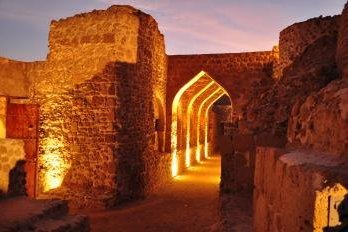
To avoid the unbearable afternoon heat of Middle East, I decided to visit the first Bahraini World Heritage Site, Qal’at al-Bahrain fort, in the late afternoon, a nice recommendation by locals but unfortunately not a good way to appreciate the site’s experience. I arrived the fort around 4 PM, forget that in November the sunset will be around 5 PM. The entrance is free, so I walked directly to the fort. The complex is indeed a very large archaeological site that has many layers of history from Dilmun, Greek, Arab and Portuguese.
The first site I saw was the ruin of small water channel that once was the most important harbor of Dilmun Civilization. Then I saw the ruins of Dilmun city which easily recognizable by large stones for construction. The Greek city was just next to the Dilmun counterpart and was built by much smaller stones and mortar. It was already twilight; I felt sad that I could not see any details of the Arab city. Since it was too dark to see historical ruins, I went to see the most impressive part of this complex, the Portuguese fort which was brilliantly illuminated by floodlights. The fort was once the Arabic fort and then Portuguese built European styled fort on top of it, so the fort is the melting pot of two styled military architecture. But to be honest there is nothing much interesting on the design of the fort. The most unique elements I found on this …
Keep reading 0 comments
I visited this WHS in November 2016. Having already visited Badami Caves, Elephanta Caves and Ellora Caves, I thought Ajanta Caves were going to be somewhat of an overkill but I was so wrong.
What Ajanta lacked in terms of architecture and carvings/sculptures it made up for with outstanding paintings. A flashlight is a must to be able to appreciate the beautiful paintings especially in Caves 1 and 2. The most famous paintings are the Padmapani and the Vajrapani.
In Ajanta, Caves 2 and 16 are worth viewing for the paintings and murals, Caves 4 and 24 for their sculptures and architecture, while Caves 1, 7, 9, 10, 17, 19 and 26 have a bit of both. Cave 26 is quite similar to one of the Buddhist caves in Ellora but the one in Ajanta also has some paintings and a lovely reclining Buddha.
Cave 1 is the closest to the entrance/exit and the most beautiful of the Ajanta Caves. With this in mind I decided to head straight to the farthest cave and visit the caves in descending order ending with Cave 1. Just next to the ticket booth, you can spot the brass UNESCO WHS plaque.
The tiny ASI bookshop was selling information booklets of several WHS (World Heritage Series) at 50% so for less than 15 euros I bought all the WHS booklets of the sites I visited and of others I wish to visit.
Keep reading 0 comments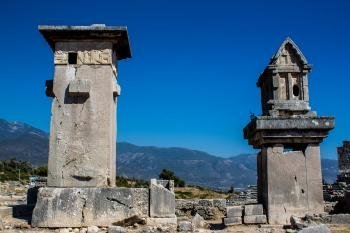
Even today, the capital of Lycia gives you the impression that this was a civilisation that was able to do things on a grand scale. The twin sites of Xanthos and Letoon are only about 60 kilometres from Fethiye but are slightly tricky to get to if you don’t know what you’re doing. They are not an obvious stop for tourists passing through although tour buses of Turkish locals are more likely to stop there.
It’s a pity, because both locations (which are about five kilometres apart and I easily walked between) have a lot to offer. Not only are they an interesting insight into the Lycian culture but also they show the influences that came from both the west and east.
Keep reading 0 comments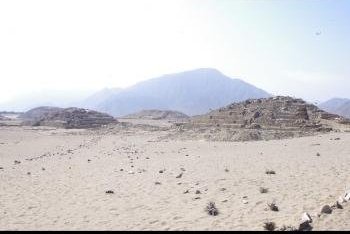
Caral Supe in one of the oldest cities in the world. Situated in the desert, north of Lima, the ruins are easily accessible on a day trip from the Peruvian capital. I took my tour bus from parque Kennedy in Miraflores, Lima.
The site if very interesting and archeological discoveries have allowed to better understand how people were living 5000 years ago.
Keep reading 0 comments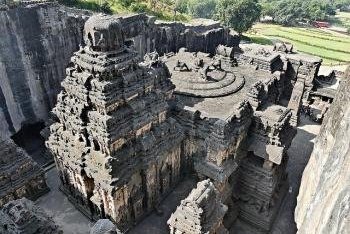
I visited this WHS in November 2016. I had already marked it as a top WHS and it surely didn't disappoint. Even though there is another great WHS relatively nearby (Ajanta Caves), I think both deserve a lengthy visit (if not a revisit) for different reasons.
Ellora Caves is made up of 34 caves from 3 different religions and the majority of the caves have beautiful carvings and/or sculptures apart from the architectural genius involved.
The closest cave to the entrance, Cave 16 or Kailasanatha temple, would easily deserve inscription alone for its unique architecture and complexity (picture). Any point of view but especially from above will help you appreciate this mindboggling piece of architecture.
My personal favourite were the Buddhist caves, especially the 2 and 3 storey ones for their rock-cut Buddhas and Cave 10 (quite similar to Ajanta's Cave 26) for its acoustic properties. The Jain caves are also worth visiting but to me were the least interesting having visited other Jain temples in India.
I spent a whole day at Ellora and I kept revisiting Cave 16 for different lighting, angles and perspectives and Cave 10 whenever a Buddhist monk visited to experience the soothing chants echoing throughout the cave. On the way to the caves from Aurangabad, I also stopped to visit the Daulatabad Fort and Minaret.
I would strongly recommend visiting Ellora and Ajanta on different days if possible so as to take them in at leisure.
Keep reading 0 comments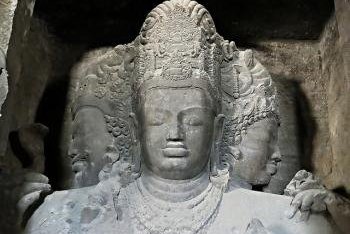
I visited this WHS in November 2016. I had an early morning flight from Goa to Mumbai and so I opted to beat the rush hour morning traffic and head straight to the Gateway of India and the Taj Palace & Tower.
I bought my tickets for the "luxury" ferry to Elephanta Island which is less crowded and in a slightly better state than the "normal" ferry. I also opted to pay the extra 10 rupees to stay on the upper deck which is even less crowded and great for taking photos of the Gateway of India.
After around one hour in the Arabian Sea, I set foot on Elephanta Island and decided to walk along the jetty instead of waiting for the tourist train to depart. After a number of stalls, 5 rupees are collected as local tax and then you have to walk uphill for a while before getting to the Elephanta Caves entrance.
There are 5 Hindu caves in total even though the main cave has the most important sculptures. Having visited Ellora, Ajanta and Badami Caves, I failed to appreciate any OUV in this WHS and apart from the 6 metre Trimurti of Elephanta (picture) showing the three faces of Shiva all the other sculptures are damaged and only worth viewing as a national heritage or pleasant sidetrip from Mumbai.
However, I don't think I'll ever forget the Elephanta Caves as after my visit I found out that the 1000 and 500 rupee notes had been …
Keep reading 0 comments